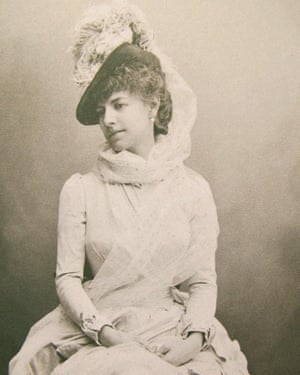Two lost essays by Marcel Proust about Parisian high society at the fin de siècle are to be published in English for the first time following their discovery by an American scholar. Of particular significance to academics are their revelations that the great French novelist was exploring ideas for In Search of Lost Time, his autobiographical masterpiece, around 14 years earlier than previously thought.
One essay was unknown, while the other was presumed lost. Both show that the author’s fascination with aristocratic salons and society doyennes developed long before 1913, when he published his seven-part classic of French literature, with the Guermantes family among fictional characters in a narrative about the decline and fall of an aristocratic ideal. One essay, The Great Parisian Salons, dates from 1893 when Proust was just 21, and runs to around 1,850 words. It had been completely overlooked until now because Proust had written it under the pseudonym Tout-Paris in Le Gaulois, a prestigious society journal.
The essay was discovered by Caroline Weber in researching her book, Proust’s Duchess: How Three Celebrated Women Captured the Imagination of Fin-de-Siècle Paris.
Commenting on The Great Parisian Salons, Weber told the Observer: “No one ever knew that Proust wrote the article. It’s brand new.”
Weber, professor of French and Comparative Literature at Barnard College, Columbia University, said that other Proust scholars had not looked through early issues of Le Gaulois, even though Proust is known to have first written for the publication nine months later, using the same Tout-Paris pseudonym. “It’s really exciting. It was hiding in plain sight. It’s fascinating,” she said.
Weber added that the two essays cast new light on the literary master. “They add texture and depth to our understanding of the genius this young man would one day become. He’s already deploying in these essays a few of the literary techniques that would later become associated with his mature style. The discovery of two previously unknown writings by him is made more interesting by the fact that these writings show him before he was famous.”
In The Great Parisian Salons, Proust explores the hierarchies of aristocratic and elegant society. He lists “the most esteemed closed salons in Paris”, mentioning that of the Comtesse [Elisabeth] Greffulhe among “exclusive” hostesses, adding: “Some people will call these salons coteries, others [will call them beacons of] good taste.

“We believe these salons deserve neither this excess of honour, nor this indignity… Which salons are more aristocratic than elegant, and which ones more elegant than aristocratic? Where is the dividing line, and how can it be established without giving [certain hostesses] legitimate cause for offence?”
Greffulhe was one of the three socialites who shaped Proust’s vision of noble glamour, the focus of Weber’s book. Weber found the second essay, The Salon of the Comtesse Greffulhe, 1902, which is around 3,000 words long, in an unmarked box in the Greffulhe family’s vast private archives.
“The essay was supposed to run in Le Figaro, but Elisabeth Greffulhe had the article killed because her husband thought that such publicity was vulgar and he was not afraid to beat her up when she defied him,” said Weber.
Her research also led to her solving a mystery that she claims has baffled critics and historians for 125 years – the identity of “the lady in grey”, the bewitching society belle who drove the celebrated novelist Guy de Maupassant – one of the young Proust’s literary heroes – to madness and eventual suicide.
“Based on more archival documents that I uncovered, I have proven – I think conclusively – that another of my book’s three heroines, the man-slaying salonnière Geneviève Bizet Straus, whose illicit extramarital affair with Maupassant I recount, was the ‘lady in grey’,” she said.